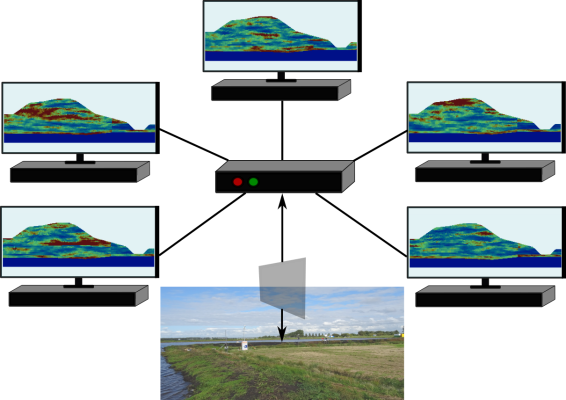One of these approaches, which I have been studying during my PhD work, is the random finite element method. This method analyzes uncertainties in detail, and also includes spatial correlations, which have the impact of reducing uncertainty.
What are spatial correlations? We are used to living with uncertainty, we know that if we flip a coin it may either fall on its head or on its tail – but if we do it many times, we will have an approximately equal outcome. In soils, and other materials, if we sample the material properties at one location, they will be different than at another location (much like flipping a coin). However, if we sample the material properties close-by the first location, they will be very similar (not like flipping a coin). How close is close-by and how similar the properties are, are defined mathematically by the spatial correlation.
In the random finite element method, I generate many examples of feasible soil properties from the measured statistics. Then I use numerical analysis to calculate the slope stability based on each one. Finally, I combine all of these results to quantify the reliability of the slope against failure. Unlike most past methods, this method does not involve any prior assumptions regarding the failure and hence provides a more complete idea of the probability of failure of a dyke. For large structures such as dykes, this method translates into large computational requirements, which can be seldom be met by a desktop computer. This is where the Grid computing facility at SURF plays a huge role in reducing a typically month-long computational time to just a few hours.

The project that I am working on involves reassessing the stability of several regional dykes in the Netherlands using the computational facilities at SURF. This research, using the random finite element method, already looks promising: the results from it have led to a huge reduction in the reinforcement measures and costs required to ensure the stability of a dyke, while making more accurate and informed predictions about its chances of survival. Further re-assessments of several other dykes are ongoing, the results and insights from which can be used to modify the existing guidelines.
Me and several researchers in the Geo-Engineering Section at TU Delft, headed by Prof. Michael Hicks, are working in this direction. This project is a continuation of the work done during my PhD.
Our research group: Prof. Dr. Micheal Hicks, Assoc. Prof. Dr. Phil Vardon, Asst. Prof. Dr. Ir. Bram van den Eijnden, Dr. Ir. Tom de Gast, Dr. Divya Varkey, Ir. Guido Remmerswaal, Elahe Jamalinia MSc.
Further reading
- High-performance data procesing services at SURF
- Research Paper in ScienceDirect: Evaluating residual dyke resistance using the Random Material Point Method
-
Research paper in Georisk: On characteristic values and the reliability-based assessment of dykes
-
Research paper in Géotechnique Letters: On characteristic values for calculating factors of safety for dyke stability
-
Related use case on surf.nl: How safe are our dykes? (in Dutch)
0 Praat mee